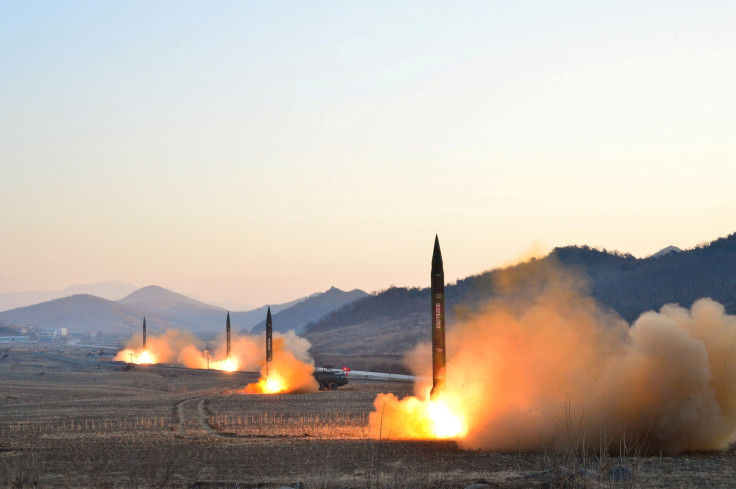Will North Korea Attack US? Kim Jong Un Says It Will Mass Produce Ballistic Missiles

Following news last week that North Korea’s missile defense program was developing faster than expected, leader Kim Jong Un ordered mass production of a medium-range ballistic missile with the ability to reach US bases in the area Monday. According to reports, North Korea had success during testing of the ballistic missile the day before.
The news was confirmed by state-run Korean Central News Agency (KCNA), which said that Kim “expressed his great satisfaction” with the results from the test launch. “Saying with pride that the missile's rate of hits is very accurate and Pukguksong-2 is a successful strategic weapon, he approved the deployment of this weapon system for action,” KCNA reported Monday.
Read: Can North Korea’s Nuclear Missiles Hit The US? Weapons Program Advancing ‘Faster Than Expected’
U.S. experts, however, are reportedly wary about claims that the medium-range ballistic missile, which North Korea dubbed the Pukguksong-2, meets the technical requirements to be mass produced.
“U.S. officials, who spoke on condition of anonymity, said the test did not demonstrate a new capability, or one that could threaten the United States directly, Reuters reported Tuesday. “But the test was North Korea's second in a week and South Korea's new liberal government said it dashed its hopes for peace.”
During a trip to South Korea earlier this year, Secretary of State Rex Tillerson said “all options are on the table” when it comes to handling threats from North Korea’s nuclear and missile programs.
Read: North Korea Ready To Attack US? Pyongyang Claims Latest Missile Was An IRBM, South Korea Denies
“Certainly we do not want for things to get to a military conflict, we're quite clear on that in our communications, but obviously if North Korea takes actions that threaten the South Korean forces or our own forces, then that would be met with an appropriate response,” Secretary of State Rex Tillerson said in March. “Let me be very clear: the policy of strategic patience has ended. We are exploring a new range of security and diplomatic measures. All options are on the table.”
President Donald Trump seemed to echo that sentiment in a series of tweets that claimed North Korea “is looking for trouble.” He added that a U.S. trade deal with China, North Korea’s closest ally, would “be far better for them if they solve the North Korean problem!”
© Copyright IBTimes 2024. All rights reserved.





















